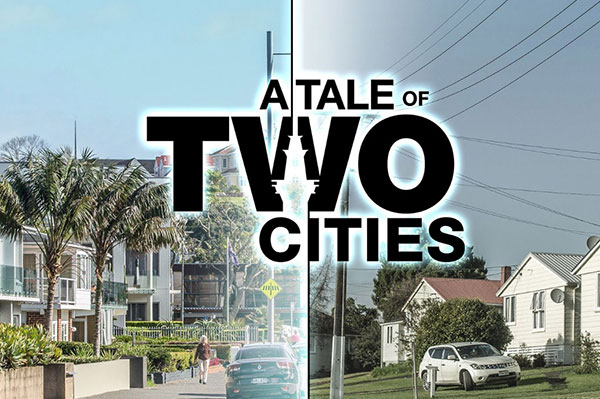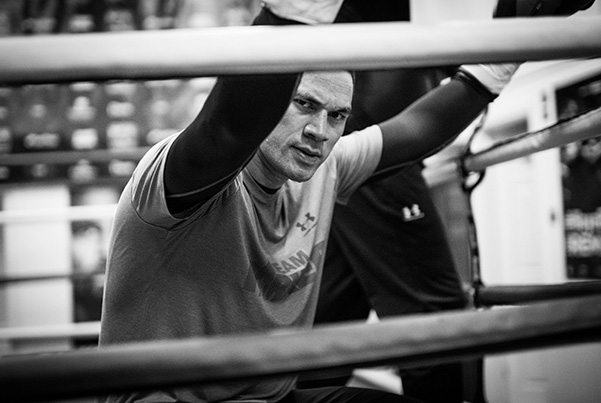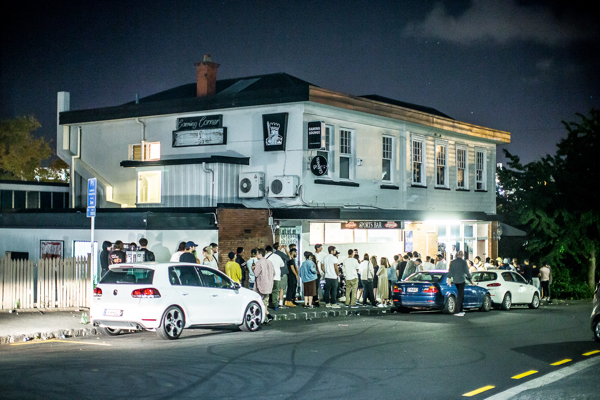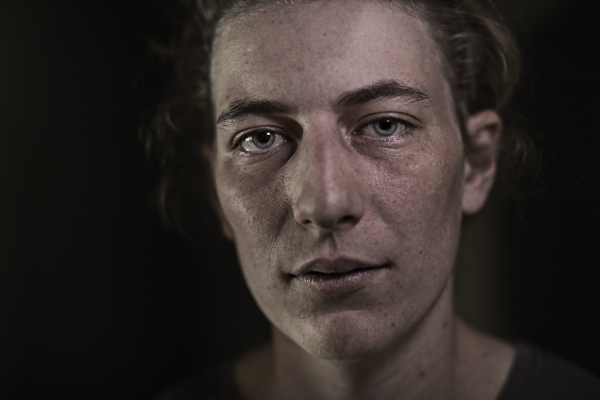

The former Olympic athlete and Lord Mayor of Auckland, Les Mills, walks into a conference in New Orleans which bears his name. Three thousand people are there to talk, not about the Olympian or the Mayor, but the worldwide fitness business. “Are you really Les Mills?” some of the attendees ask, incredulous.
“We thought it was just a name someone made up. Are you a live person?”
Mills, now 83, chuckles at the memory. “I would say ‘I hope so’. They would ask for a photo. It was a bit ridiculous. A bit strange.”
New Zealanders who don’t recall the Olympian or the Mayor would at least be likely to know the 12-strong gym chain, headquartered in that paint-splattered building on Auckland’s Victoria St, which this year turned 50.
For another 104 countries and 20,500 gyms from Japan to Benin, Les Mills means BodyPump, BodyAttack, BodyCombat and another 18 brand names - the exercise-to-music fitness classes that pack gym studios and make gym owners happy.
Les Mills International is a staggering machine: it sells a million items of Les Mills branded clothing each year, annually licenses the use of over 500 pop songs (and even records its own cover versions of some), and has the power to stage a fitness class led by its celebrity trainers at an historic French palace with 5000 eager participants.




CHAPTER ONE:
CHEF DE MISSION
If you want to change your body shape, this is the programme, this is the day
BODYPUMP INSTRUCTOR


It all began, half a century ago, with a basement gym so small and ill-equipped that it had alternate days for men and women to visit. Actually, it starts even earlier, in 1949, when a 14-year-old Les Mills bought some Charles Atlas home gym equipment. “I was a bit of a skinny kid and I thought ‘I would like to be big and powerful and have all the girls look at you and go ‘wow’,” he says.
That sparked a lifelong interest in gyms and weight training, and then an athletic career that included four Commonwealth Games medals and 24 national discus and shot put titles. Some 20 years after that mail-order purchase, Mills reckoned a gym (back then, Auckland had just a handful) would make him happy, make him some money, and do some good.
An old Mt Albert Grammar schoolmate was the receiver for a chain of gyms gone bust; Mills found $5000 and the Auckland branch of Silhouette American Health Studios was his. He placated the existing members by offering them a year free if they signed up for two. A single set of changing rooms and toilets meant women on Monday, Wednesday, Friday and men on Tuesday, Thursday and Saturday. With Les and his wife Colleen working full-time, they made a living from Les Mills’ World of Fitness, but not much more: “We staggered along, managed to pay the rent and the staff and just made it.”
Les’ son Phillip, who now runs the business, first worked there as a 14-year-old, wiping down machines and handing out magazines to people on the exercycles. Back then, he says, gyms were pretty dull.





The Mills family have ruled Les Mills since day one - in particular, founder Les, his son Phillip (seen here together in the 1990s), and Phillip's wife Jackie, seen here teaching an early aerobics-based class.
The Mills family have ruled Les Mills since day one - in particular, founder Les, his son Phillip (seen here together in the 1990s), and Phillip's wife Jackie, seen here teaching an early aerobics-based class.
The Mills were a sports-mad family: in 1974, they were all due to compete in the Christchurch Commonwealth Games: Les in the shot, Colleen in the 400 metres, Phillip in the 110m hurdles and daughter Donna in the high jump. Les shifted both his family and his training group south for six months and to keep them happy, gave each a plot in the garden to grow vegetables. Only Les, still ranked sixth in the world, wasn’t selected, on the grounds of age and injury. “What does it matter?” he asks now. “If you cut your arm off and still throw the distance, it wouldn’t matter would it?”
Instead, he ended up doing TV colour commentary and acting as chef de mission for the one-woman St Lucia team. He was a man who loved adventures, and that gig led to a few years working in Papua New Guinea, then a choice: a university post in Hawaii, or a job at Athletics New Zealand. He also considered moving to the UK, where he felt the gym market was “in a primitive state” and wide open for a big chain to muscle in. “But what did we really want out of life?” he asks.
He decided it was best for the family to stay in New Zealand, which meant taking the gym business seriously. In 1979, operations shifted from the original gym to a much bigger site in Auckland’s Victoria St - it remains their flagship - and from here the empire began to expand; to Dunedin, Wellington, Christchurch, Hamilton, and eventually, the world.
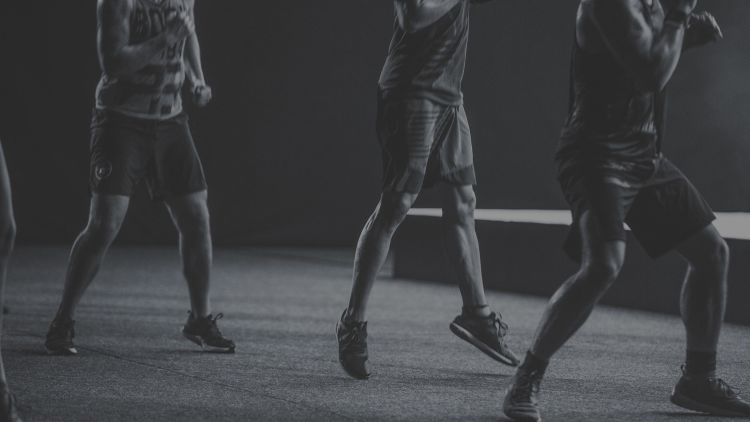






CHAPTER TWO:
WEIGHTLIFTING TO MUSIC
You guys look good, eh
RPM INSTRUCTOR
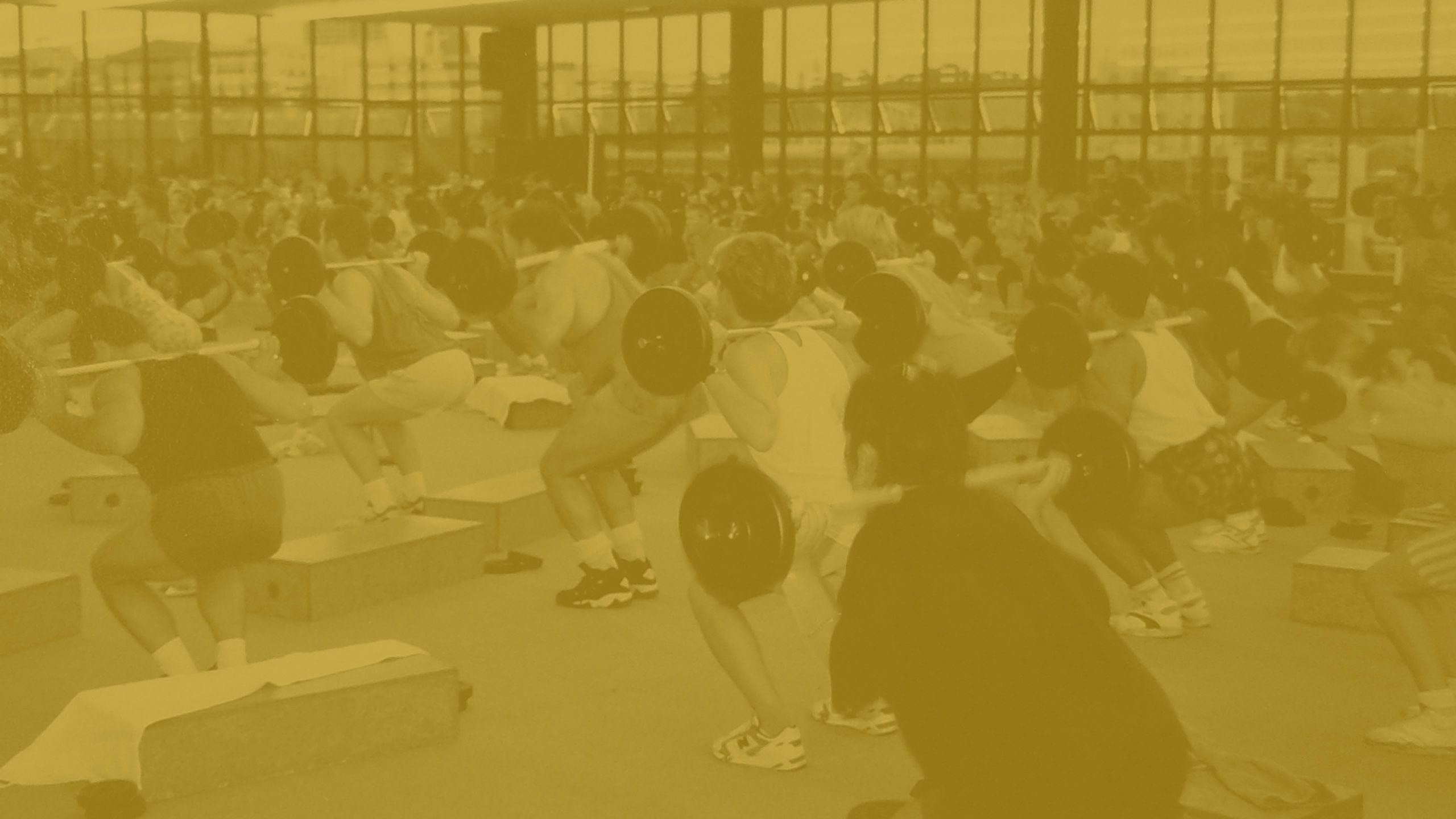

The quantum leap, says Les, was BodyPump. Almost every gym ever offered exercise classes to music; he had seen Victorian-era photos of people lifting dumbbells while someone played the piano. Les Mills’ World of Fitness had cooked up some of their own: with the help of some dance and theatre mates, Phillip Mills created classes with classic 80s names like Jazzergetics and Jazzercise. You can imagine the leopard-print leotards.
After university in the US, a spell managing the band Hello Sailor (sister Donna married two band members, Graham Brazier and Dave McArtney) had taught Phillip Mills he didn’t much like the music lifestyle but he did like gyms. He saw them as another branch of the entertainment business: “I wanted to make the gym more fun, less boring.”
By the time BodyPump came along, Phillip owned the gyms - buying them back after the 1987 stock-market crash, which wiped out the investment companies who’d bought them from Les and Colleen only a few months earlier. He borrowed millions. Yes, he says, the gyms might have survived if he hadn’t. “But they would have sold it to someone else. It would have had the family name on it, and I couldn’t let that happen.”
BodyPump was his big idea. And it was a winner. With his wife Jackie, a GP, aerobics champion and now a key Les Mills powerbroker, he invented the class in the lounge room of their Herne Bay villa. “We got really ripped,” he says. “That was an aha moment: ‘This is going to be big because anything that gets results, people want’.”
He offers a complex explanation about the physiological reasons why Pump works. As a casual Pump-goer myself, I can attest that it definitely gives some vanity-soothing definition.
Traditional weight lifting calls for loading up a barbell with as much weight as you can manage, then completing three sets of eight or 10 repetitions. BodyPump asked participants to cut their weight right down, but do a lot more reps: perhaps 1000 in a single class. “People get an immense amount of work, but anyone can do it,” says Phillip Mills.






“The fact it has been popular for as long as it has been means we’ve got the formula right,” says Les Mills’ head of research, Bryce Hastings.
It won’t, reckons independent personal trainer Grant Helleur, make you muscular, but it should give you a decent all over workout.
Expert physiologist Paul Laursen isn’t so sure; he says Pump is probably good for novices, but anyone wanting significant physical improvement should probably go old-school. “You’re doing some sort of thing in the middle … I would say it is less effective, in my opinion.”
Regardless, BodyPump took Les Mills global. For that they can thank Kangaroos captain Mal Meninga. Meninga, training with the visiting Australian rugby league team at Victoria St, saw a class and was intrigued. He was a shareholder in a Canberra gym owned by Kiwi ex-pat swim coach Bill Robertson and persuaded Robertson to trial it. Soon, Robertson was the Les Mills agent for Australia and south-east Asia, selling the class into gyms around the region. His success persuaded Phillip Mills that this was the way to spread the business worldwide.
“Some agents were good, some were terrible,” says Mills. “Some of them ripped us off, some were total crooks. And some were bloody amazing, incredible people.”
In the latter category was their man in France, Christophe Andanson, a former TV infomercial presenter and wrestler (of both the Olympic and smashing-chairs varieties). “I thought ‘he’s a bit of a madman’,” says Mills. “You would never have picked him to be the guy. But he turned out to be an incredible entrepreneur.”
Andanson was persuaded to move his business from Paris to the southern city of Aix-en-Provence because that was where Mills rented a holiday home. “The man convinced me more than the project,” says Andanson. “We have some good times talking about business, but also about the wine and the good food. Our business is not only about business but about friends, about love.”
After a year, Andanson said to Mills it was a good business and could he have Belgium too? His empire now boasts turnover of $US35m, spans 39 countries - most recently, Burundi, Burkina Faso and the Congo - and serves 2500 clubs.
Over in England, Les Mills’ “primitive” market, it was at first a hard sell. Kickboxing Londoner Dan Cohen was one of the first four instructors hired there, after a four day audition. He was, he admits, a travelling salesman, touring the country with a car boot full of instruction manuals and VHS tapes, persuading gym owners to trial the classes and instructors, used to inventing their own classes, to take his readymade ones.
“They couldn’t get their head around it,” says Cohen, now the programme director for the martial arts class Body Combat. “We were absolutely ahead of our time back then, and I think that’s why we had so much resistance: ‘what do you mean you do weightlifting to music?’”
So it was tough. The New Zealand business poured in cash to keep the international arm alive. Les Mills, whose eight-year stint as Auckland Mayor ended when he lost the 1998 election, came back as chief executive of Les Mills International (LMI). “We were in a mess: it was losing money, [but] the idea was great,” Les says. “I was sure it would [come right]. Phillip was sure it would. I was perhaps not quite as sure as he was, but pretty sure.”
For eight years, says Phillip, they lost money. Eventually, they began making money and haven’t stopped. He’s got theories why the gym business became good business: people too time-poor to play team sports, the empowerment of women, the modern obsession with looks.
Never did he consider quitting. “It was a big buzz,” he says.”We were dealing with some of the biggest gym organisations in the world, multi-million corporations - it was a big thrill.”






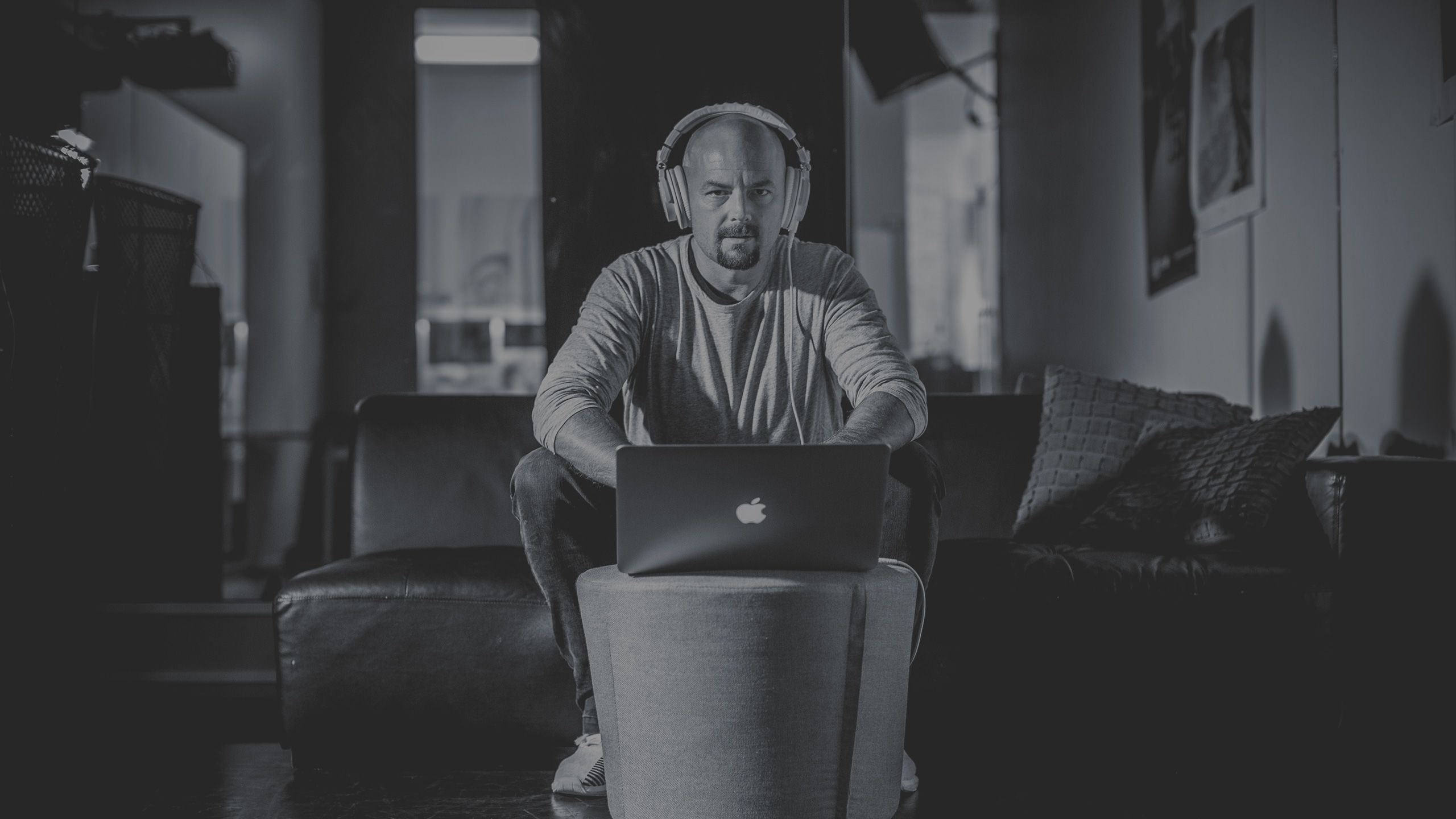
CHAPTER THREE:
ROCKSTARS
Don’t let this workout beat you! Fight it!
BODYPUMP INSTRUCTOR


One trainer calls it the McDonald’s of fitness. He’s not being insulting. What he means is wherever you go in the world, the quarter pounder with cheese is the same. Grant Helleur, chairman of the Exercise Association of NZ, doesn’t like the metaphor but agrees with the idea: “It doesn’t matter if you’re in Auckland, Sao Paulo or Berlin.”
Ensuring it looks the same wherever you go is deliberate. Every three months, Les Mills International releases a new edition of each class. It’s a big deal. Fans await the latest version and compare them to previous iterations. Trainers worldwide receive a digital package on their Les Mills app: the music track listing, choreography notes, and, most importantly, the master-class video, where a team of elite trainers take a handpicked audience through the new moves.
Instructors watch, learn, then teach that new release. The video is also used in ‘virtual’ classes, run in gyms’ off-peak hours when it’s not worth using a live trainer, and sent to ‘on-demand’ customers, who pay a subscription for a feed of videos.
At LMI’s labyrinthine Auckland headquarters, where everyone from receptionist to CEO wears gym kit, a team of programme directors (PDs) write the new classes, then guide them through to release.
It begins with the music. The PDs sift up to 2000 songs to select the final ten they’ll use in their classes. Cohen, PD of BodyCombat and the ab-training class CX Worx, puts on his headphones, goes into his purpose-built home gym, tries some moves, and searches for a “feeling”. “If it feels right,” he says, “if it feels powerful, if it brings something out of me.”
They know that music is vital. Academic research shows it can improve our moods, and make us work harder than we realise. That’s why there’s a whole department devoted to it.








Licensing manager Josh James secures rights to 800 tracks a year, re-recording those where he can only get the publishing rights, hiring composers to write originals if the need arises.
U2, Pearl Jam, the Beatles and the Rolling Stones are on a banned list of artists that cannot be used at all - though gym tastes tend more towards upbeat dance and electronica.
Big music publishers send in their releases, hoping they get used. James logs them all by beats per minute - the most crucial element of a good workout track.
Trainers fly in from Japan, South Africa, Australia, the US and mainland Europe to perform on the finished video. Selection to perform in the videos is highly-coveted and comes with a lot of pressure. It gives trainers cachet in their own patch and is a powerful marketing tool for the business. “It’s an experience to treasure,” says American trainer Andy Parrish, here for his first-ever filming.
Among this quarter’s intake is Iranian-born, Dubai-based master trainer Amir Behforooz, a Les Mills obsessive who introduced Les Mills classes to the city-state’s biggest gym and learned English by watching videos of RPM bike classes. Now, for the third time, he’s appearing on one.
“It is a huge thing for me,” he says earnestly. “I am so proud.”

There are, of course, the personality trainers, who draw their own devoted followings, like BodyJam director Gandalf Archer-Mills (“he’s like a God,” someone says to me) and veteran Auckland trainer Mark Sinclair, who tries to “create a smile on your face” while you work out. Sinclair would read women’s magazines to “find some crap to talk about” and has fielded complaints about his comments about Donald Trump.
But many of the younger generation are remarkably on-message and on-script. At a BodyCombat rehearsal, two days before filming, I watch the trainers exactly matching the angles of their thighs on a kick so they’re all on the same plane. American trainer Marlon Woods stands in front of the mirror, pumps his fists, and mouths to an imaginary audience: “Are you good?” I see Woods do precisely the same thing at precisely the same moment in the final live practice, and then again when the class is filmed.
By the time of filming, says Cohen’s BodyCombat co-director (and former partner) Rachael Newsham, they want to be so precise that they are on a calm, nerveless autopilot.
Up front at the BodyCombat team’s final rehearsal, a live class at Les Mills Victoria St, there’s an enthusiastic contingent of middle-aged Japanese, clad in official Les Mills merchandise. Effectively, these guys are Les Mills tourists - they fly in for filmings and swarm instructors for selfies. Nobody really wants to talk about them; it’s more an embarrassed acknowledgement.
The attention, though, is familiar for the big-name trainers - within the business, referred to as ‘rockstars’. They’ve travelled extensively to take showcase classes before huge crowds in places such as Brazil, Sweden, Japan and the Netherlands. BodyJam’s Archer-Mills (husband of third-generation Diana Mills, the daughter of Phillip and Jackie) recalls leading one at the ornate beaux-arts Grand Palais in Paris, in front of 5000 screaming fans. “The class finished and they didn’t stop screaming. I get goosebumps just thinking about it,” he says. He went off stage and, overwhelmed, lay on the floor in darkness for half an hour, staring up at the 100 metre-high glass ceiling. “It was indescribable bliss.”
It’s a strange, contained sort of fame that some find awkward. Sinclair, a long-time Les Mills trainer, recalls walking along a street in Paris and being hailed by name by a stranger. “It’s quite a weird thing,” Sinclair, a former government debt administrator, says. “I don’t know how real famous people get on.” Although, he adds: “But if I get hit by a bus, there’s someone else there to take my class, and in six months time, it’s ‘Mark who?’”
Long before all of this, the classes were disseminated using diagrams hand-drawn by Colleen Mills. Then it was VHS tapes, one per gym, of Phillip, Jackie and, bizarrely, the entertainer Mika, running through the moves, standing on the gym floor with no audience and a single camera. When I turn up to the second quarter shoot for 2018, it's very different.
The outside broadcast truck arrived at the indoor stadium in east Auckland at 5am. For the next three days, they’ll film a class every 90 minutes. There are five cameras, one mounted on a huge weighted boom, two running on tracks, a professional TV director (Ross Peebles, who I last ran into running TVNZ’s Mastermind), and backstage, where crates of fresh Reebok shoes and bananas are parked, a make-up team work 15-hour days.
When they film at bigger venues, regular members pay $5 to work out in the audience. This time the aesthetic is stripped-down, athletic, with a handpicked, buff crowd. The tourists are here, but they are quietly parked at the back - out of the camera’s sightlines.
The presenters have already been carefully costumed, in colour-coded outfits designed to showcase every one of 50 new styles of branded gear that will be released simultaneously with the video. The top 1000 trainers in the world are endorsed for free kit; the others, who get a discount, anxiously await the newest gear. Retail sales manager Rochelle Carter says 80 per cent of the one million items sold annually are to instructors.
Dan Cohen, Rachael Newsham and the Malaysian, Spanish and South African co-presenters of BodyCombat emerge in tones of black, white and grey from a smoke-machine mist into bright white downlights and booming music and it all begins. Marlon does his shout out; they all nail their lines; it’s ultra-slick. “There’s definitely a feeling of release [after],” says Cohen. “It’s intense.”







CHAPTER FOUR:
THE PARTY HORN
Stay with me all the way to the end, commit to it
BODYCOMBAT INSTRUCTOR


They know a lot. They know that if you turn up to the gym five times a fortnight or more, they’ve most likely got you for a decade, and they hope, in Les Mills-speak, you’re a “raving fan”. They know if you come fewer than three times a fortnight, they’ll lose you within a year.
Gym sales staff once earned a bonus for how many memberships they sold. Now that bonus is skewed to how often a new recruit turns up in the first 90 days; 21 visits is the magic number. If your attendance drops below that figure, they will call you. In fact, an entire team sits in a nondescript office around the corner from the Victoria St gym, tasked with making sure members don’t quit.
That retention team - led by 30-year Les Mills veteran Kathy Highland - phone lapsed members, offering incentives like free personal training sessions to bring them back.
“It’s about our ability to influence them at the right moment,” she says.
‘Termination’ callers are talked back from the brink: one single mum who argued she couldn’t find the time to come was counselled through her schedule by another single mum on the team. “When you get inside their heads, they don’t really want to cancel, because when they joined they wanted to achieve something,” Highland says. When they ‘save’ someone (some 2200 of them last year), they blow little party horns to celebrate.
Once there was a trope about gym owners loving the easy-money members who signed up, paid, but never came; but everyone at Les Mills says they want you to keep coming back. They even want you to like it.









“Most people are exercising because they have to. Our job is to get people to a point where they are exercising because they want to,” says research boss Bryce Hastings. “The fitness industry hasn’t quite caught up with that yet, because a lot of people in the industry are fanatics: They wouldn’t understand that people don’t love training. But we understand our job is to create an environment and experience that people want to come back to.”
They’re pretty good at that, says psychologist (and Les Mills member) Kirsten Keown. Keown says Les Mills deliberately use a range of techniques to make sure they hit the mark with everyone, regardless of what motivates you. From the primary colours on the walls, the choice of upbeat, fast-paced music, to instructors creating a “party” atmosphere by dancing or singing in classes, it’s all aimed at making you forget exercise hurts. “They are trying to amplify the positive emotions you feel while doing that and re-frame the discomfort into something worthwhile,” she says.
Another reason why the classes are so tightly scripted is because every word has a purpose. I watch Hastings record an internal educational video for trainers on motivational techniques. He tells them they are “natural motivators who love to challenge and drive people in our classes ... always searching for that extra thing to say or do to help people over the finish line.” He runs them through the way internal (“drive through your knees”) and external (“rip the floor apart beneath you”) prompts work and how to guide people with ‘positive’ and ‘dissatisfaction’ cues.
Take a Les Mills class, and you notice they feel like a journey, building to intense peaks. “One of the clever things they do is give you a sense that change is happening there in the moment,” Keown says. “They say things like ‘this next effort will make the difference’... so you’re not reaching for some rewards that will come months ahead, it’s coming right now. We tend to be more motivated by proximal rewards than distant rewards.”







CHAPTER FIVE:
THE EMPIRE
Let’s march to the top of this hill together!
RPM INSTRUCTOR


I’m riding a bike through a tropical island, then beneath the earth’s crust. It’s mid-morning on a Thursday in Newmarket, central Auckland. The gym world’s new gamble is ‘immersive’ training. A big chunk of the $20m cost of the newest, flashest Les Mills branch was outfitting a new cycle room (in Les Mills speak, the CHAIN studio) with a giant curved screen to accommodate The Trip.
The Trip’s virtual reality bike ride can take you through the streets of San Francisco or across the surface of an alien planet. I’ve never managed to book in, as classes are always over-subscribed. But Phillip Mills - who is departing the next day for the annual Les Mills Europe ‘tribal gathering’ of 600 master trainers and executives in Punto Umbria, southern Spain - rides it with a handful of mates any Thursday he’s in town. He’s told me it’s “mindblowing”, and invites me along to join him and former NZ sprint champion Shane Downey for the ride. Indeed, it’s brilliant fun: like a rollercoaster that makes you forget you’re exercising.
The Trip was co-designed by Phillip’s son, the very private Les Mills Jr (who doesn’t want to talk to me for this story); Les Jr’s sister Diana calls him a “creative genius”.
Ironically, Les Mills Sr isn’t too sure about the concept. “I’m a bit sceptical about how these immersion studios are going to go,” he says, genially. “They are hugely expensive to put together, but what do I know about virtual reality? [Phillip] thinks it will work … and where I do think he is right, he is still trying to be at the cutting edge. If he hits a few losses, it doesn’t matter: you want to be up the front pushing and you have to be prepared to stuff up a few times.”
The Les Mills model is to pick trends, analyse them, and jump in if they think they work. Recently, it’s been high impact intensity training - HiiT - where you basically work as hard as physically possible for 30 seconds. Next on the horizon is more holistic mind-body-spirit type stuff. Group fitness will keep growing: 75 per cent of visits to flashy Newmarket are to classes, against 50 per cent elsewhere.
Phillip’s daughter Diana has ideas about the next big thing after the next big thing. The virtual reality stuff, she says, could lead to gamification. Imagine going for a run, but pursued by a dinosaur?
It took Phillip Mills about five years to pay off his debts when he bought the company back. There was the patch where LMI couldn’t pay its way, but for the past decade or so it appears to have been plain sailing. He doesn’t want to talk about what the company, or indeed the family, is worth. “We have enough to be comfortable, we have for a long time,” he says. “We’re not people who want to live a rich person’s lifestyle.” They are more into organic, clean living: Mills is extremely exercised about climate change and green business. There are signs of it everywhere, including above the rubbish bins at HQ, where a diagram shows which types of takeaway coffee cups are recyclable.
The 2017 NBR Rich List puts the family fortune about $210m (68th equal); Mills doesn’t seem to quibble too much with that. Their house, where they’ve lived since 1982, is valued at $11.25m. “Les [Jr] and I have never been poor, never known poverty - I think we have had the remarkable privilege never to have had to worry about it,” says Diana Mills. “So we are not concerned about it: we are not a monetarily-driven family. It was never about accruing wealth for the sake of having things.”
The family trust owns 86 per cent of the New Zealand company and 92 per cent of LMI, the remaining fractions split between long-serving employees and friends. That will all, eventually, pass down to Les Jr and Diana. At 63, Phillip is still lean and athletic, and like all his staff, perpetually clad in gym gear. The second time I interview him, I forget my jacket. He eschews the lift and bounds up and down four flights of stairs to collect it, explaining he’s making up for missing the gym that day. He seems slightly taken aback at the question of succession. He wants to keep going, he says, “for a long while yet”.
But, for the first time, he’s ceded control of gym design, allowing Les Jr to lead an $8m, two-year remodelling of the flagship Auckland gym - a rambling old building which once even had a nightclub, Grapes, co-owned with John Banks and Tony’s Steakhouse owner Tony White. The redesign will include what they claim is the world’s largest ‘immersive’ cycle studio with 100 bikes.
Diana, who first visited the gym at two days old and joined the family business full-time after graduation at 21, says: “I think that now we are both [her and Les Jr] completely dedicated to being the future of this company.” She adds: “[The company] is easily the way we can make the biggest difference to this world in a positive way.”



Marching relentlessly into the future: red marks the countries with gyms that take Les Mills classes. The total stands at 105, with the latest additions including the Congo, Benin and Burkina Faso.
Marching relentlessly into the future: red marks the countries with gyms that take Les Mills classes. The total stands at 105, with the latest additions including the Congo, Benin and Burkina Faso.
Les Mills is expanding aggressively, not just in Iraq and Iceland, but here. The goal is one new gym a year; a massive undertaking when they typically buy their sites outright and never close them (Christchurch’s Ferrymead a quake-forced exception). Les Mills NZ chief executive Dione Forbes-Ryrie says the North Shore and Mt Wellington are their next targets. The family ownership and the professed disinterest in money lets them play a very long game. “We have to be commercially astute, but not commercial driven,” Forbes-Ryrie says.
“I’ve got to say they are very, very good at what they do,” independent personal trainer Grant Helleur says.
“They are world class leaders in group exercise, no two ways about that.”
Relentless attention to detail is everywhere. Attendance at every class is counted and used to re-format the timetable every three months. Gym floor time-and-motion studies remove pieces of equipment that don’t get used enough to justify their real estate. There’s even a gym lab at Penn State University led by a professor of kinesiology churning out academic papers on the efficacy of Les Mills programmes.
After six months of membership and three weeks observing how they work, it’s not hard to see the Les Mills brand marching relentlessly forward, growing ever dominant, its legion of “raving fans” behind them. When I ask where she sees them in the future, Diana Mills imagines a second, simpler stream of classes sold direct to instructors to run in parks and community centres; “Everywhere,” she says, with a smile.
File images courtesy of Les Mills International and the Stuff archive.
Words: Steve Kilgallon
Visuals: Jason Dorday
Design & layout: Aaron Wood
Editor: John Hartevelt








